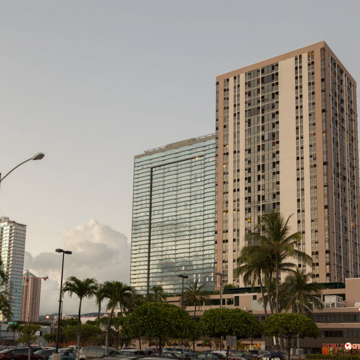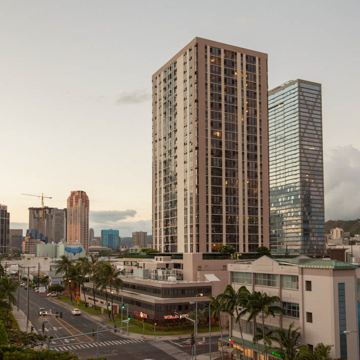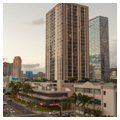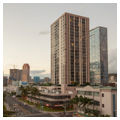Too muscular for some tastes, the forty-four-story, semicylindrical tower makes a bold statement in a condominium-filled skyline. The tallest building in Hawaii when completed, the 418-foot-high, cast-in-place, reinforced-concrete structure's inner, box-shaped, “super core” wall system eliminated the need for massive perimeter framing, and supports the dramatically cantilevered twelve stories on the mauka side. The first of a planned four-tower complex, the subsequent buildings have done little to enhance the overall ambiance, relating solely through materials and brawn.
Nauru Phosphate Royalties Trust developed this property as part of its investment portfolio to provide financial security for the approximately seven thousand citizens of the Republic of Nauru, the world's smallest island nation, covering a mere 8.1 square miles. Previously, phosphate mining was the economic mainstay of this island, but this resource is expected to be depleted by approximately 2015.
Design architect Barry Patten of Australia joined the firm of Yuncken, Freeman Brothers, Griffiths and Simpson in the 1950s. There he worked with Nauru Phosphate Royalties Trust on Nauru House in the 1960s, which ultimately led to this Honolulu commission. In 1985, he formed the firm Curnow Freiverts Glover Patten, and in 1989, although retired, he continued to work from his home on such projects as Nauru Tower. He died in 2002.







